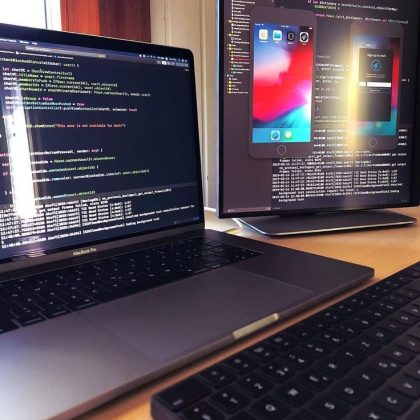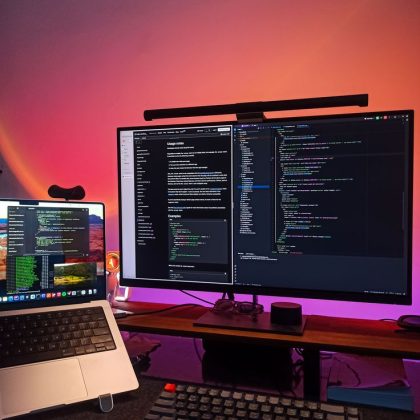Course Outline: Debugging and Errors
Module 1: Introduction to Debugging
- What is debugging?
- Definition of debugging and its importance in programming.
- The debugging process: identifying, diagnosing, and fixing bugs in code.
- Why debugging is a crucial skill for programmers.
- Types of errors in programming
- Syntax errors: mistakes in the structure of the code (missing parentheses, commas, etc.).
- Runtime errors: errors that occur during the execution of a program (e.g., division by zero).
- Logical errors: errors in the program’s logic that result in incorrect output, but no crash.
Module 2: Common Types of Errors
- Syntax errors
- How to identify syntax errors and fix them.
- Example: fixing common syntax mistakes like missing semicolons or mismatched parentheses.
- How to use error messages to understand the issue.
- Runtime errors
- Understanding runtime errors: division by zero, null pointer dereferencing, etc.
- Example: how to handle potential runtime errors (e.g., using conditionals to prevent divide by zero).
- Logical errors
- What are logical errors and how they differ from other types of errors.
- Example: debugging a program with incorrect output due to flawed logic (e.g., incorrect calculations).
- How to approach finding logical errors systematically.
Module 3: Debugging Tools and Techniques
- Using print statements for debugging
- How print statements can be used to track variable values and program flow.
- Example: adding print statements to a function to verify the input/output at each step.
- Using a debugger
- What is a debugger? Introduction to debugging tools (e.g., built-in debuggers in IDEs).
- How to set breakpoints, step through code, and inspect variable values during execution.
- Example: using a debugger to find where the program is breaking and identifying the faulty logic.
- Error logs and stack traces
- How to interpret error logs and stack traces to identify the cause of runtime errors.
- Understanding stack trace output: where the error occurred and the function calls leading to it.
- Example: reading a stack trace to pinpoint the source of an exception.
Module 4: Strategies for Effective Debugging
- Divide and conquer debugging
- Breaking down the code into smaller sections to isolate the source of the error.
- Example: commenting out large blocks of code to narrow down the problem area.
- Rubber duck debugging
- What is rubber duck debugging and how explaining the problem out loud can help clarify the issue.
- Example: discussing the logic with someone or even an inanimate object to identify flaws in reasoning.
- Reproduce the error
- How to consistently reproduce the error, which makes it easier to identify the cause.
- Example: identifying the exact conditions under which a bug occurs.
Module 5: Best Practices in Debugging
- Write readable and maintainable code
- How clean, well-structured code can help prevent errors and make debugging easier.
- Best practices: meaningful variable names, proper indentation, clear logic flow.
- Test-driven development (TDD) and debugging
- Introduction to test-driven development (TDD) and how writing tests first can prevent many bugs.
- Example: writing unit tests to catch errors early and simplify debugging.
- Unit testing and debugging
- Using unit tests to isolate problems in specific parts of the code.
- Example: running unit tests to validate the correctness of a function or module.
Module 6: Debugging Complex Programs
- Debugging multi-threaded applications
- Introduction to debugging programs with multiple threads or processes.
- Challenges of multi-threaded debugging: race conditions, deadlocks.
- Example: using thread-safe debugging techniques to troubleshoot multi-threaded programs.
- Memory management issues
- How to debug issues related to memory allocation and deallocation.
- Example: debugging memory leaks or accessing invalid memory locations.
- Tools for memory debugging (e.g., Valgrind).
- Network-related bugs
- Identifying and fixing bugs related to network communication (timeouts, broken connections).
- Tools and techniques for debugging network-related issues.
Module 7: Advanced Debugging Techniques
- Reverse debugging
- What is reverse debugging? How to go backward through the program to identify when the error occurred.
- Tools for reverse debugging and their use cases.
- Profiling and performance debugging
- How to use profiling tools to identify performance bottlenecks.
- Example: debugging slow code by finding time-consuming functions and optimizing them.
- Handling exceptions and errors gracefully
- How to catch and handle exceptions using
try,catch,finally. - Example: implementing robust error-handling to prevent crashes and provide meaningful error messages to users.
- How to catch and handle exceptions using
Module 8: Debugging in Practice
- Hands-on exercises
- Debugging common coding challenges: identifying and fixing errors in sample code.
- Example: fixing a program that calculates the factorial of a number but contains a logical error.
- Debugging a real-world application
- Work on debugging a complete project: finding and fixing bugs in a project with multiple files and complex logic.
- Example: debugging a simple game or a calculator program with various issues.
- Final debugging project
- Provide a buggy project for students to debug, applying all the techniques learned in the course.
Module 9: Conclusion and Final Tips
- Recap of the debugging process
- Key steps in debugging: identifying, isolating, fixing, and testing.
- Reviewing debugging tools and strategies that are most useful in various scenarios.
- Debugging as a continuous skill
- How debugging is an ongoing learning process: always improving with experience.
- Tips for staying patient and systematic when debugging complex issues.
Additional Materials:
- Video tutorials: Demonstrations of common debugging techniques and tools.
- Quizzes and assessments: Short quizzes to reinforce debugging concepts and error types.




Reviews
There are no reviews yet.